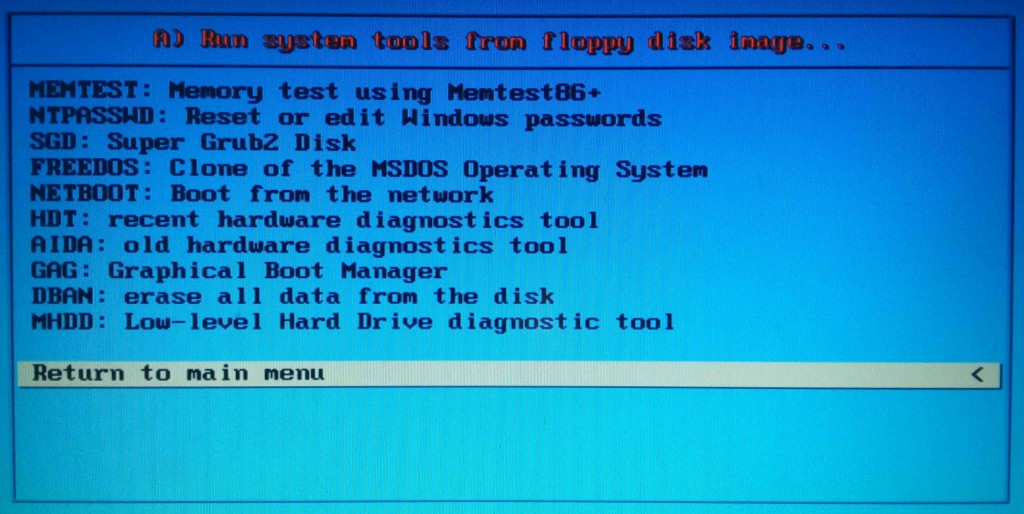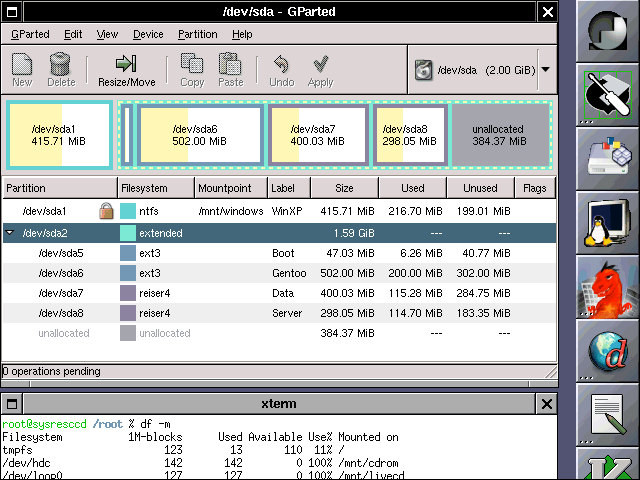

- #Systemrescuecd install hfsprogs how to
- #Systemrescuecd install hfsprogs mac os x
- #Systemrescuecd install hfsprogs mac os
- #Systemrescuecd install hfsprogs update
- #Systemrescuecd install hfsprogs full
sudo mount -t hfsplus -o force,rw /dev/sdx /media/mntpoint or. sudo apt-get install hfsprogs The next command to mount or mount the hfs drive needs to be as follows. Now check with your file manager if test directory was created. First, make sure that you have hfsprogs installed. All you have to do is to install the files that are on the SystemRescue disc to an existing partition on your local disk, that can be either a Linux partition (ext4, xfs, ) or a Windows one (NTFS). Testing with terminal: $ cd /home/user/backup Using grub4dos you can even install SystemRescue on a Windows NTFS partition.

Now for HFS+ submission: $ sudo chmod 775 /home/user/backup Now for good luck: $ sudo mount -o remount,rw /home/user/backup
#Systemrescuecd install hfsprogs full
$ sudo apt-get install hfsprogsĬreate a folder in your home directory called backup and copy the full path of backup to put at the end of the following command: $ sudo mount -t hfsplus -o force,rw /dev/sda2 /home/user/backup So we are only interested in sda2 in that example. Now plugin the HFS+ Hard drive into Ubuntu and run this command: $ sudo lsblk -o NAME,FSTYPE,SIZE,MOUNTPOINT,LABEL
#Systemrescuecd install hfsprogs mac os
(On later Mac OS versions you'll have to hold down the option button when you click the File menu. Choose Disable Journaling from the File menu.Select the volume to disable journaling on.Open Disk Utility under Applications -> Utilities.Disabling journaling from HFS+ is still possible up to OS X Yosemite 10.10 Ubuntu only has support for writing to non-journaled HFS+ volumes. Change that value from 1000 to 501, and when you reboot your user will be listed in the login screen.You need to turn off the journaling if you want to write to it from Ubuntu. To do this, just open a Terminal and run gksudo gedit /etc/fs and search for UID_MIN in the text file. You may also want to fix your login screen, since by default Ubuntu won't list users with a UID of less than 1000. Now, you should be able to read and write to both your Mac and Linux user's home folder, no matter what OS you're logged into. After updating apt database, We can install hfsprogs using apt-get by running the following command: sudo apt-get -y install hfsprogs.
#Systemrescuecd install hfsprogs update
This will change your Linux user's UID to 501 and fix your home folder permissions so that you still own them. Update apt database with apt-get using the following command. Sudo chown -R 501:yourusername /home/yourusername Then, open up the Terminal and type in the following commands, once again hitting enter after each one (and replacing yourusername with your Linux user's username): sudo usermod -uid 501 yourusername Type in a new password for the temporary user when prompted. So, run the following commands in the Terminal, hitting Enter after each one: sudo useradd -d /home/tempuser -m -s /bin/bash -G admin tempuser

First, we're going to add a temporary user, since we don't want to edit a user that we're currently logged into. If your User ID is something different from 501, replace 501 with your other UID in the terminal commands below.īoot into Linux (we're using Ubuntu in this example) and fire up the Terminal. By default, the first user in OS X has a UID of 501, but you can double check this by going into System Preferences in OS X, right-clicking on your user, and hitting Advanced Options. Unless you have a reason for choosing otherwise, we're going to change our Linux UID to match our OS X one, since it's a bit easier. we just need to change our UID in one OS so that it matches the UID in the other. Apple provides mkfs and fsck for HFS+ with the Unix core of their operating system, Darwin. What is hfsprogs hfsprogs is: The HFS+ file system used by Apple Computer for their Mac OS is supported by the Linux kernel.
#Systemrescuecd install hfsprogs how to
You should have read and write access to your HFS partition-however, the permissions on your Mac user's home folder will prevent you from reading or writing those files. Introduction In this tutorial we learn how to install hfsprogs on Ubuntu 22.04. A new option to Disable Journaling will come up in the menu. Click on your HFS partition, hold the Option key, and click File in the menu bar. To disable journaling, just boot into OS X and fire up Disk Utility. Journaling is a feature that improves data reliability, and unfortunately it makes HFS drives read-only in Linux.
#Systemrescuecd install hfsprogs mac os x
By default, Mac OS X formats volumes in journaled HFS+ volumes.


 0 kommentar(er)
0 kommentar(er)
